В.Шавров История конструкций самолетов в СССР до 1938 г.
"Фоккер" С-I ( "Це-один" ) с двигателем БМВ-IIIа в 185 л. с. - двухместный разведчик, очень похожий на D-VII, но с бензобаками, установленными на оси шасси, с одиночным управлением. Применялся в 1923-1925 гг. как тренировочный в небольшом количестве.
"Фоккер" C-III - вариант предыдущего с двигателем "Мерседес" в 165 л. с., без баков на шасси, с двойным управлением, учебно-тренировочный.
Самолет||C-I
Год выпуска||1921
Двигатель , марка||БМВ-IIIа
мощность, л. с.||185
Длина самолета, м||7,2
Размах крыла, м||10,6
Площадь крыла, м2||27
Масса пустого, кг||830
Масса полной нагрузки, кг||350
Полетная масса, кг||1180
Удельная нагрузка на крыло, кг/м2||44
Удельная нагрузка на мощность, кг/лс||6,4
Весовая отдача,%||29,7
Скорость максимальная у земли, км/ч||180
Время набора высоты||
3000м, мин||14,3
5000м, мин||27
Продолжительность полета, ч.||4
А.Александров, Г.Петров Крылатые пленники России
О популярности класса Ц свидетельствует тот факт, что в 1918 г. даже Энтони Фоккер, к тому времени снискавший известность своими истребительными аэропланами, решил попробовать свои силы на новом для него поприще. На заводе "Фоккер Флюгцойгверке", ставшем с 1 октября 1913 г. (н. ст.) преемником зарегистрированного 22 февраля 1912 г. (н. ст.) предприятия "Фоккер Авиатик" (Fokker Flugzeugwerke GmbH; Fokker Aviatik GmbH), он начал строить прототип "Фау 38" (V 38), который, однако, был не более чем двухместной разведывательной модификацией истребителя "Фоккер Д. VII", вооружавшейся привычными 2 пулеметами: подвижным у наблюдателя и синхронизированным у пилота. Опытный образец едва успели завершить до конца войны, и на фронт модель Ц. I не попала. Из побежденной Германии задел примерно из 70 аэропланов данного типа Фоккер вывез в Голландию, где организовал новое производство. В 1922 г. советское правительство приобрело 3 аппарата "Фоккер Ц. I", включая самолеты с заводскими номерами 118 и 139 и 12 машин "Фоккер Ц. III" (учебный вариант той же модели), в том числе с заводскими номерами 117, 138, 143, 144, 148 и 161. В мае "Ц-первые" прибыли в Петроград и служили затем в 1-й и 3-й отдельных истребительных авиаэскадрильях и в Московской авиашколе, откуда в 1924 г. аэроплан # 118 отправился в НОА (Научно-опытный аэродром) и использовался там для решения экспериментальных задач до 1928 г. "Ц-третьи" летали в различных учебных подразделениях до 1929 г. Аппараты типа Ц. I экипировались двигателями БМВ (BMW) 185 л. с. и пулеметами "Виккерс", а на тренировочных аналогах ставились 160- и 180-сильные "Мерседесы". 2 августа 1922 года (н. ст.) "Фоккеры", в том числе "Ц-третий" с весьма необычной эмблемой на фюзеляже (45, а и б, из коллекции ЦГАКФФД), участвовали в параде-празднике на Комендантском аэродроме. Очевидно, переделка базовой одноместной машины в двухместную потребовала существенной перекомпоновки, в частности, топливный бак переместился в район шасси, где его прикрыли обтекателем. Изображенный самолет оснащен, скорее всего, пропеллером ЕТА, тогда как белый цвет пневматиков объясняется довольно необычно: "Чтобы предохранить покрышки камер от нагревания в жаркие дни, а потому и от скорого износа, рекомендуется покрывать их снаружи белой клеевой краской, состоящей из порошкообразного мела, столярного клея и воды".
A.Weyl Fokker: The Creative Years (Putnam)
Two-seat developments of the Fok. D.V1I
It was obvious to Fokker and Platz that it would be easy to convert the Fok. D.VII into a two-seater. If the guns and ammunition boxes were removed, a seat for a passenger could be installed in front of the pilot, close to the centre of gravity. The undercarriage tank of the V.36 would permit the use of a smaller fuselage tank, thereby making more space available.
The wings had ample strength, even for aerobatics in the two-seat configuration; the only modification needed was the provision of a large cut-out in the trailing edge of the upper wing to enable the passenger to enter and leave his cockpit. The landing speed remained acceptable; and the performance with a B.M.W.IIIa was still good, though not what would be expected of a combat aircraft.
These modifications were made, and the resulting aircraft was designated V.35. The main fuel supply was carried in the undercarriage tank, but an additional tank was installed between the cockpits.
The type was flown by Ernst Udet, and in it Platz was treated to aerobatics by Fokker. He enjoyed the experience.
Another experimental two-seater was designed specifically for military purposes. This development had been suggested, for infantry liaison and observation duties, by the IdFlieg, who were possibly hoping for an aircraft embodying major Fok. D.VII components. Production of such a machine could have been quickly initiated.
The Fokker V.38 was not a simple conversion of the Fok. D.VII, however. It was a larger aircraft with extensive modifications to make it suitable for its intended duties. The only truly common factor between the V.35 and the V.38 was the B.M.W.IIIa engine.
In the V.38 the pilot occupied the forward cockpit and had a single fixed gun, the ammunition box for which was close behind the engine and was without ventilation. A deep cut-out was made in the wing trailing edge. The main fuel tank was in the undercarriage, and there was a small gravity tank just behind the engine. Fuel feed was by air pressure supplied by an engine-driven pump via a pressure-regulating valve. There was also a hand pump in the pilot’s cockpit.
The fuselage structure was not fundamentally different from that of the V.38’s predecessors. The observer’s cockpit, surmounted by a ring mounting for a movable gun, was immediately behind the pilot.
Owing to its military load, the V.38 was heavier than the V.35; consequently its wing area was increased by about 30%. The span of the V.38 was nearly two metres greater.
The maximum speed of the V.38 was stated to be 175 km./hr. (108 m.p.h.), and it was claimed to have reached a height of 5-0 km. (16,500 ft.) in 21 -5 minutes. It is doubtful whether this latter figure was achieved with full military load.
The V.38 was later converted for the towing of gliders.
There was one special V.38. This one had a large supplementary petrol tank in the fuselage, containing enough fuel for six hours’ flight. Fokker had it built in September 1918, and it was kept in readiness for his use at the Goerries aerodrome under the watchful eye of de Waal. It was Fokker’s escape vehicle in which he intended to flee to Holland if the necessity arose. The Fok. E.V affair and its possible consequences had made it clear to him that some such provision was necessary.
Unfortunately for Fokker, however, it seems that the people working at the aerodrome had guessed his intentions. When he found himself up against the revolutionary Schwerin workers about November 9, the special V.38 was put under guard by the workmen. Fokker did not dare to go near the aerodrome, but made an undignified disappearance in disguise; he travelled to Berlin by rail, where he engaged some communist deserters as a bodyguard.
In view of the satisfaction that the D.VII was giving, and of the fact that the IdFlieg had suggested a two-seat development of the D.VII, Fokker was confident of substantial orders for the V.38. He therefore put a batch of sixty aircraft into production in anticipation of a contract.
But the prototype failed to pass its type test and was not recommended for Service use. There was no room for parachute stowage, and the observer’s cockpit was too cramped for observation and infantry-liaison duties. The ammunition box was again too near the engine, and the troubles experienced with the D.VII would be repeated. Adverse criticism was levelled against the aileron control.
All in all, the V.38 compared unfavourably with the latest Hannover and Halberstadt two-seaters. Fokker was told to improve his aircraft before submitting it for a further type test, but the Armistice supervened.
Although the Service designation Fok. C.I was applied to this two-seater it was not justified, because the type was never officially adopted.
After the Armistice, the sixty premature V.38s were smuggled into Holland, where most of them were readily bought by the Dutch Government as a speedy means of filling the Dutch Army Air Service's requirement for modern two-seaters and light bombers. The first batch, ordered in 1919, were redesigned “Fok. C.I’’ with B.M.W. engines.
These Fokkers gave excellent service for at least three years, whereafter, although they were still perfectly serviceable, they were replaced by later Fokker types with more powerful engines. Numbers of these surplus Fok. C.Is were exported, notably to Colombia and the U.S.A.
In service, the biggest trouble with these aircraft was the undercarriage tank. Its soldered seams split open, creating leaks: this was a frequent occurrence after bumpy landings. The undercarriage structure itself was not really robust enough for military use, and stronger wheels had to be fitted.
And yet the Fok. C.I earned quite as much praise for its safety in crash landings as for its flying qualities. The Dutch Air Force did not have a single serious injury from any Fok. C.I crash landing.
Late in 1918 Fokker’s Budapest branch told him that the Austrians were enquiring about the possibility of a seaplane version of the Fok. D.VII. Fokker felt sure the German Admiralty would also be interested, so he had a pair of stepped floats designed by a yacht designer and fitted them to a version of the V.35. In this aircraft the passenger sat behind the pilot. Several successful flights over the Schwerin lake were made with various passengers, including de Waal and Platz. No production ensued, but during 1920 similar floats were fitted to a Fok. C.I and further successful trials were made. However, the Fok. C.I remained a landplane.
The Fokker C.II was a three-seat conversion made by Spijkers in Holland during 1920-21. This variant had two seats for passengers under a cabin top; the passengers had to sit facing each other in rather cramped conditions. One C.II was used by the K.L.M. for years; it was used for aerial photography. Another was used by Sherman Fairchild in the U.S.A.; it was flown by E. P. Lott in the “On to Dayton” race in 1924. The type was also used in Canada, on skis when necessary.
The Fokker C.III of 1922 was more or less a trainer conversion of the C.I with a 220-h.p. Hispano-Suiza. The type was supplied in small numbers to Spain.
There were other two-seat variants and conversions of the D.VII, mostly made after the war by various organizations or people, usually without consulting the designer. But during the war a few clandestine conversions were made by enterprising officers commanding fighter units. These aircraft were made from unofficially resurrected Fok. D.VIIs that had been officially written off.
After the war, the Deutsche Lloyd Flugzeug-Werke at Adlershof, under the supervision of the D.V.L., redesigned a Fok. D.VII into a two-seater. This variant was given the designation DLFW. D.VIII. Unfortunately, the prototype was crashed by F. von Koeppen while performing aerobatics too near the ground. Several more examples of this conversion were turned out by G. Hueffer at Krefeld. One served as a flying laboratory for research conducted by the Technical University of Hanover; it was wrecked when landing in fog, but the crew were unhurt.
The DLFW. D.VIII had the 160-h.p. Mercedes engine, but it was moved forward and the fuselage lengthened. The wing span and area were the same as those of the Fok. D.VII.
J.Herris Fokker Aircraft of WWI. Vol.1: Spinne - M.10 & Watercraft (A Centennial Perspective on Great War Airplanes 51)
Fokker C.IW
The fifth Fokker watercraft was a floatplane conversion of the C.I (the military designation for the production version of the V.38). The C.I was a two-seat derivative of the Fokker D.VII fighter.
J.Herris, J.Leckscheid Fokker Aircraft of WWI. Vol.5: 1918 Designs Part 1: Prototypes & D.VI (A Centennial Perspective on Great War Airplanes 55)
Fokker V35
In 1918 the Fokker-Flugzeugwerke produced several variations of the successful production Fokker D.VII fighter. One of these was the V.35 reconnaissance fighter. The machine was a two-seater and was unarmed during the tests (it was planned to mount machine guns later).
The second cockpit displaced the fuselage fuel tank; the fuel was in an airfoil-shaped tank between the wheels. The engine was a 185 hp BMW IIIa.
The V.35 was flown by Ernst Udet postwar, but it did not show any serious advantages over two-seat production fighters.
Fokker V38
The V38, W/N 3658, was an enlarged two-seat derivative of the D.VII with the 185 hp BMW IIIa. It was the prototype of the Fokker C.I, which was only built in series after the war. Armament was one synchronized gun for the pilot and a flexible gun for the observer.
Fokker V41
According to the Fokker type list drawn up at the end of the war, the V41 was a two-seat biplane with N-struts and a 185 BMW IIIa engine. So the V41 was likely a designation for one of the two-seater versions of the D.VII known from photos. Various enlarged derivatives of the D.VII were investigated and tested. On May 31,1919, the pilot Parge in a Fokker D.VII with a large wing, as later used in the C.I, reached an altitude of 8000 meters in only 36 minutes. Likewise, there have been different two-seat school and travel variants of the D.VII. Whether these different experimental aircraft also carried a V-number is unknown to this day.
Fokker V41 Specifications
Engine: 185 hp BMW IIIa
Wing: Area 25.2 m2
General: Empty Weight 723 kg
Loaded Weight 1300 kg
C.Owers Fokker Aircraft of WWI. Vol.7: Postwar (A Centennial Perspective on Great War Airplanes 67)
Canada
Civil Canadian Fokkers
There is confusion with the Canadian Fokker C.II transports. C.II G-CAEV was registered on 1 March 1925. It was equipped with skis for winter work, and was mainly used for aerial photography, particularly by the Canadian National Railways to help with proposed new train routes. Cancelled in 1928. Became N3190 on the US civil register. US sources show G-CAEV as being sent to Canada from the USA. The real history still needs further research to undo the confusion.
Denmark
The Fokker C.I in Denmark
On 26 May 1923, Denmark placed an order for two C.l biplanes with spare BMW engines and various spare parts. These were quickly completed and the two aircraft (w/n 225 - 226) were flown to Denmark from Fokker in the Netherlands with the first landing at Klovermarken on 30 September 1923. The other had to make an emergency landing near the small town of Meppel and was sent back to Fokker for repairs, and did not arrive until 13 October.
These first two received the serial numbers 2 and 3, probably due to the Fokker D.VII having the number ‘1’. Haerens Flyvertropper (Army Air Force) did not have a number series for each type. On 6 June 1923, the Army sent instructions on how to paint them. They were to be khaki with Danish red/white cockades on wings and body. In the case of the former, they were to be about 30 cm from the wing leading edge, while on the fuselage they were to be located just behind the observer’s seat and have the same diameter as the fuselage height.
On 30 October 1923, the Flyvertropper requested that three more C.l machines be obtained, but there was no provision for this in the budget. On 1 April 1924, the new budget came into force and the received permission to order three more C.l aircraft, but they were not available by the time funds were available. Fokker must have used up the stock of C.l biplanes that he had brought back with him from Germany.
The result was that the Haerens Flyvertropper Vaerksteder (Army Air Corps Workshops) workshops at Klovermarken built three C.l biplanes from measurements of the originals but with certain changes such as modifications to the rudder and moving the fuel tank from the landing gear axle fairing to the upper wing, and oil brakes.
On 28 February 1925, the Air Force announced that the new aircraft would be completed in the spring, however the exact date is unknown. The following year, on 8 November, it was announced that “All machines of the C.I type will be marked on the rudder with ‘O’ and consecutive numbering starting at No. 51." Thus No. 2 became O-51, etc.
The only fatal crash with the C.I occurred on 12 January 1928, when O-55 crashed on the ice at Christianshavn’s canal shortly after take-off from Klovermarken. Sergeants Ole Christian Lundholm-Petersen and Hans Christian. Jensen were killed. This crash led to the Flyvertropper moving to Kastrup where the so-called Rohrbach hangar was available. The two original C.I biplanes were scrapped in 1932, their parts used as spares. The following year the last C.I was retired but not officially deleted until the following year.
Denmark's O-Maskinen
When more trainers were required, the C.I was used as the basis for the O-machines. Fifteen two-seater transitional trainers, the I O, were built from 1926 with a 220-hp BMW engine. Serials Nos. O-56 to O-70. An additional seven single-seat version, the II O, were also constructed from 1932. Serials O-71 to O-78. They had no value as combat aircraft but had some value as reconnaissance and observation aircraft. They were mostly used in the training school. From 1935, no aerobatics were allowed for these aircraft. They served up until 1940.
The prototype, O-56, first flew on 22 November 1926 (O-56), piloted by Lt. Carl Erlind. Fourteen were built in 1928-29, (O-57 to O-70). The type was used for light reconnaissance and observer training
As the Flyvertropperne had seventeen 160-hp Mercedes in store, it was decided to use these for a single-seater version, the II O. The prototype (O-71) was test-flown by Rapt. C.C. Larsen in December 1932. Next year seven were built: O-72 to O-78.
When Denmark was occupied in 1940, nine I O and five II O biplanes remained in service, and were scrapped.
Netherlands
The LVA and the D.VII
<...>
One special D.VII requires mention here. This two-seater was owned by Fokker and had flown at the ELTA. It was made available by Fokker to Lt Willem Versteegh in 1920 or 1921. He used it as the lead plane for the aerobatic team Vijf vingers aan een hand (Five fingers from one hand). The machine had Netherlands national markings applied and had long exhaust pipes. It carried the unofficial serial number F600. The ‘Five Fingers’ were set up in 1922 and performed at the ICAR exhibition in Rotterdam. They were led by Lt Versteegh and proved successful. And continued to perform for many years. In August 1923, the team performed at the ILUG (International Air Exhibition) at Goteborg, Sweden. On their way to the exhibition, the team gave a demonstration in Copenhagen, and a journalist was so impressed that he called the team ‘Five Fingers From One Hand' and they adopted this name thereafter.
F600 had larger wings than the normal D.VII, a BMW engine, and a second seat for the team’s mechanic. The aircraft was maintained by the LVA and reserialled F800 after the Fokker C.VI No. 600 was delivered in later 1925. When Versteegh left the LVA in 1935 to work with KNIML, the aircraft was returned to Fokker. On 26 May 19334, it was registered PH-AJW to A.H.G. Fokker, Schiphol, Amsterdam.
<...>
The Fokker C.l in the Netherlands
The Fokker C.l in the LVA
The LVA ordered 60 C.l biplanes, serial Nos. 485 to 544, and they were all delivered in 1920. In 1922, the LVA workshops manufactured another five (Nos. 545 to 549) using parts supplied by Fokker.
At the end of the 1920s and early 1930s, a number of the LVA’s C.l biplanes were rebuilt using Armstrong-Siddeley 218-hp Lynx radial engines. The fuselage structure had to be modified and the opportunity was taken to use a new undercarriage. The work was carried out in the LVA workshops. This version was known as the C.lA, but colloquially as the ‘C.l Lynx’. The flight performance of the C.IA was slightly better than the BMW powered C.I, but the flight characteristics were less. The following machines were fitted with the Lynx engine: Nos. 485, 489,490, 492, 495 to 497, 503, 514, 516, 521, 524, 526 529, 530, 533, 534, 538, 545 and 549. No. 529 was also re-engined with a 140-hp Armstrong-Siddeley Mongoose for a time. On 29 March 1938 the remaining obsolete aircraft were retired: - four VII, four C.I BMW, ten C.I Lynx, and one C.IV.
The Fokker C.IV, introduced in 1923, followed by the C.V, replaced the C.IA in service.
The Fokker C.I in the MLD
The MLD ordered five C.I biplanes on 7 August 1920 (serial Nos. F1 to F5), and three more on 28 December 1922 (serial Nos. F7 to F9). F3 was written off early in a crash in 1922. The MLD built F10-F16 in 1925. Up to 1930 F7, F11 and F12 were also written off. The type was retired in 1936.
Netherlands Civil Fokkers
In addition to the military aircraft, Fokker brought back to the Netherlands prototypes of the V 33, V 39, V 42 and V 43. The V.33 and V.39 flew at the ELTA and at Soesterberg. The V.42 was later tested in the Noordzeekanaal.
The year 1919 saw the Eerste Luchtverkeer Tentoonstelling Amsterdam (E.L.T.A. - First Aviation Exhibition Amsterdam) exhibition open at Amsterdam. The future for aviation was seen a broad and manufacturers came to the ELTA to highlight their wares. The realization that the financial constraints from the war and the numbers of aircraft left over from that conflict was to negate any prospects of a boom in aircraft manufacturing. One of those that exhibited at the ELTA was Fokker.
Fokker recorded that German products were banned from the ELTA after English firms refused to attend unless this restriction was put in place. On the opening day, I attracted a disproportionate share of attention by flying my latest fighting plane, the D-8, several exhibitors did object. As a compromise, each nation was to have a separate day to demonstrate their wares.
The Fokker concern was known as the N.V. Nederlandsche Vliegtuigenfabriek and Fokker’s Luchttoerisme (Fokker’s Air Tourism) gave joy-rides in LVG B.III and two Fokker C.I two-seater biplanes, and demonstrations in D.VII (w/n 3621), and D.VIII (w/n 3264). In addition, there were the following aircraft on the static display: a V 36, V 29, V 42 and an M.17E. Aircraft flying for Fokker’s Luchttoerisme had no civil registrations, they had not been introduced in the Netherlands at this time, and they carried an orange roundel with a white outline in the usual positions on the fuselage and wings. On one flying day, Fokker gave a breathtaking display of aerobatics in his red V 33. Fokker’s Luchttoerisme operated German aircraft with Dutch pilots. Its last registered flights were in March 1921. There are no known photographs for the V 29 and V36.
Internationale Lucht Vervoer Onderneming (ILVO - International Air Transport Co) was founded in Autumn 1919. For the 1920 flying season, ILVO charted Fokker Dr.I D-600 from Deutsche Luftreederi GmbH (DLR). The company also used one Fokker D.VIII amongst its mixture of German, British and Netherlands aircraft.
The Netherlands East Indies saw a civil Fokker D.VII in addition to the KNIL D.VII trainers. Eerste Nederlandsche Luchtvaart Onderneming (ENLO) was a barnstorming company that took a single red painted D.VII, piloted by Fritz Hettling, and two Albatros B.II biplanes there in April 1921. This could have been the D.VII imported by Hettling.
When No. 509 was written off in 1935, it was bought by res.Sgt Jac Th Rijntjes and received the civil registration PH-JAC on 19 June 1935. He used his C.I for advertising and taxi flights. He sold the aircraft on 14 February 1937, to Ch J Jacobs. The registration was cancelled on 18 May 1937. The fuselage survived until late 1940.
No. 527 was written off on 28 March 1936, and purchased by the N.V. Stoomlijn (N.V. Steam Line) and rebuilt to accommodate contra-rotating propellers invented by Adrian Dekker. The machine was then registered as PH-APL. The C.I with this installation was unpredictable. The machine managed to make a small jump at Ypenburg for its only flight. At the end of May 1940, PH-APL fell into German hands and taken back to Germany where it may have been tested at Adlershof.
The Fokker C.II was the C.I converted to carry two passengers in a cabin behind the pilot. At least twelve C.I biplanes were converted for civil use. All except one for KLM (H-NABX/PH-ABX) had the cabin. One was shipped to Canada, two to Colombia and four to the USA. The Colombian C.II biplanes arrived in 1928, where the Colombian airline LIACA were to operate the aircraft on domestic air services, however they were both destroyed in accidents in a short time. The KLM machine was used as for aerial photographic work and retired in 1936. A limousine C.II in KLM colours was photographed, but may have been one of the ones sent to the USA.
The Fokker C.III was a trainer version of the C.I with dual controls. Some were sold to Soviet Russia and ten to Spain where they were used by the air force but registered M-MOAA to M-MOAJ. They were powered by a 220-hp Hispano-Suiza V-8 water-cooled engine. A reproduction of M-MOAB is preserved in the Spanish Museo del Aire, Madrid. These machines were built from the C.I aircraft that had been manufactured in Germany in 1918.
One C.I was fitted with floats and flown in Germany as the C.IW. It is uncertain if this machine was tested in Germany before or after Fokker returned to the Netherlands. It is thought to have been the V.38 prototype.
LVA Fokker D.VII Fighters
F600 Two-seater. Flown by Capt Versteegh from 1920. Used as lead plane in his stunt team and to transport the team’s mechanic.
Fokker Netherlands Construction Numbers Applied to ex-German Airframes
C/N Type Date Notes
100-115 C.I 1920 LVA
116 C.II Open cabin.
119 C.I Demonstration aircraft.
120-135 C.I LVA.
136 C.III Spanish air force.
137 C.I Oberursel.
140 C.I MLD.
141-142 C.III Spanish air force.
143-146 C.I MLD.
151 C.II
152-155 C.I LVA.
156 C.III Spanish air force.
157 C.II
158 C.III Spanish air force.
159 C.I LVA.
160 C.III Spanish air force.
161 C.I LVA.
162 C.II
163-164 C.I LVA.
165 C.I Civil, USA N7752.
166 C.III Spanish air force.
167 C.II
168 C.I LVA.
169 C.II
170-173 C.I LVA.
174 C.II Canada, G-CAEV. Later USA N3190.
175 C.I LVA.
176 C.III Spanish air force.
177-178 C.I LVA.
179 C.III Spanish air force.
180-185 C.I LVA.
186 C.III Spanish air force.
187 C.I LVA.
188 C.II
189-191 C.I LVA.
202 C.II USA N262. Crashed 27 July 1931. Ex-H-NAHX?
207 C.I MLD.
214 C.II USA N11532. BMW III engine.
225-226 C.I Danish Haerens Flyvertropper, serial Nos. 2 & 3.
Source: Casius, GJ. &Geldhof, N. Fokker constructienummers 1919-1940. Copy in RAF Museum J.M. Bruce Collection Box 78.
Russia
Three Fokker C.I reconnaissance biplanes were apparently purchased by Soviet Russia through the Berlin Handelsgesellschaft Berlin on 31 December 1922.
United States of America
The Fokker C.l & the USMC/USN
The USN ordered three Fokker C.l reconnaissance biplanes under Contract O-A-33. Reqn CR18; E108; Bu-21. Strangely, the Aircraft Record Cards for these machines gives the contract as Contract O-ZA-33 with the Austrian Government. Two of these machines were trialled by the USMC and one by the Navy.
Cdr D.W. Bagley, Naval Attache, at the US Legation to the Netherlands, issued the following contract document on 8 September 1920, to N.V. Nederlandsche Vliegtuigenfabrick of Amsterdam for the purchase of two Fokker C.I biplanes:
The machine was to be packed for shipment to the USA and to be inspected beforehand. It is agreed that no flying tests of these aeroplanes are to he made before delivery. This would have been for the two C.I machines ordered for the USMC.
The first two, Bureau Nos. A-5887 and A-5888 were set up at Mitchell Field, LI. The object of obtaining these machines was to find out if they would be suitable for Marine Corps expeditionary work.
On 4 November 1920, Capt Arthur H Page Jr, USMC, made a familiarization flight in one of them. Although initially all acceptance flights were to be carried out at Mitchell Field, they were transferred to Anacostia because the Mitchell Field Navy Air Detachment was scheduled for early dissolution. The Trial Board tests were made from 4 January to 7 February 1921, on A-5887. During the tests no weakness or defect appeared in the fuselage, wing or control surfaces or fittings or appurtances.
The ordnance included a forward-firing Spandau machine gun mounted over the engine, and a Lewis gun mounted on a Hussman type Scarff ring.
The Trial results gave a top speed of 100 mph and a low speed of 58/59 mph. In climbing tests, it reached 4,850 ft in 7 mins; 9,730 ft in 15 mins and 17,920 ft in 60 minutes. It was described as a maneuverable and easy flying machine, however, it was not considered a suitable machine for Navy and Marine Corps use. The main objection to USMC use was the large field required for take-off and landing. It was recommended that the remaining two planes of this type owned by the Navy, be put in service by the Marine Corps and that no more planes of this type be obtained. Despite this recommendation a third C.I was obtained by the Navy. The order was apparently changed to three in July 1920. This caused confusion in the order as to the number of spare engines, spare radiators, airscrews and landing gear required.
Page wrote that erection of A-5888 was very simple. The plane handled very well and very fast. The speed is estimated at 80 miles; the landing speed 45 and taking-off at about 45.
A-5889 arrived at New York on 16 November 1920 and was shipped by rail to the Naval Aircraft Factory (NAF) the following month. It was to be erected at the NAF and studied carefully and held at the NAF. After inspection it could be broken down and stored.
Cdr D.W. Bagley, wrote to Hunsaker in March 1921 asking about the position of the Fokker C.I biplanes purchased by the USN as he had to do with their purchase and inspection. He noted that Anthony Fokker would be glad to furnish more without engines in case it was desired to use an American engine. He would want one sent over if this is done.
Hunsaker noted in reply that the Fokkers were tried out by our people and proved to be excellent flying machines and performed as per Fokker’s claims. There was a great deal of trouble at first in getting the engines to perform properly, hut eventually our people learned the trick and got very good results with them. It is my idea that the Marines might like this type of plane for expeditionary work, but there’s no telling how a Marine will take things, as now the Marines say they do not want this sort of plane at all but want a bigger and heavier one which will carry more load. I suppose eventually they will want to carry a motorcycle along with them as well as bombs to drop on Goo-Goo’s. However, the Marines did not want any more of the C.I type and Fokker was to be told accordingly.
USA Civil Fokker C.l/C.ll Biplanes
Several civil Fokker C.II biplanes came to the USA.
As one C.II was shipped to Canada, and four to the USA, it appears that there has been confusion around these aircraft with one source saying that the Canadian one was sent to the USA while the US sources say it was the other way around. Since the machine was written off in an accident in Canada, the latter is thought to be the correct history.
In The 1922 Aircraft-Year Book, ‘The Netherlands Aircraft Mfg Co (Fokker)’ is recorded with the Nebraska Aircraft Corp, and active at Mineola Field, LI, NY, and had two F-3 Monoplanes and one C.-2 Biplane (BMW, 185 h.p.)
Cole Palen acquired the remains of one in the late 1950s and used the wings and tail surfaces in his reproduction Fokker D.VII.
O.Thetford, P.Gray German Aircraft of the First World War (Putnam)
Fokker V 38
The V 38 was the prototype Fokker C I, design of which was completed during the summer of 1918 and construction was well under way when hostilities ceased. Much of the D VII was to be seen in the V 38, although it was necessarily a larger aeroplane. Some seventy of these aircraft, inter alia, were crated up by Fokker and taken back to Holland after the war. Engine was 185 h.p. B.M.W. IIIa.
G.Swanborough, P.Bowers United States Navy Aircraft Since 1911 (Putnam)
FOKKER C.I
In 1921 the Navy purchased three Fokker C.Is from the Dutch Fokker factory. Actually, these had been built in Germany at the close of World War I and had been taken into Holland when Fokker returned to his native land and established a new company. The C.I was essentially a D.VII with slightly lengthened fuselage and wings, and a 185 hp BMW. The C.Is (A5887-A5889) were used by the US Marines at Quantico. Span, 34 ft 10 in; length, 23 ft 8 in; gross weight, 2,576 lb; max speed, 112 mph.
L.Andersson Soviet Aircraft and Aviation 1917-1941 (Putnam)
Fokker C I and C III
Developed in 1918 by the Fokker Flugzeugwerke GmbH at Schwerin, the V 38 prototype was apparently not completed until after the Armistice. Being a two-seat variant of the D VII fighter and intended for the reconnaissance role it was armed with one fixed machine-gun firing forwards and another gun mounted on a ring in the observer's cockpit. It was of mixed construction with wooden cantilever wings and a welded steel-tube fuselage. Metal panels covered the fuselage forward of the lower wing and the rest was fabric-covered, as were the wing and tail surfaces. The ailerons, two-part elevators and rudder were horn-balanced. The interplane and under-carriage struts were made of streamlined steel-tube and the fuel tank was mounted on the axle between the mainwheels. Power was provided by the 185hp BMW IIIa water-cooled inline engine also used on the Fokker D VII.
A number of C Is was taken from Germany to Holland in 1919 and sixty of these were delivered to the Dutch Air Force, which later built five more from parts. The Dutch Navy bought sixteen and a few were also sold to Denmark. The C II was a civil version of the C I and the C III was an unarmed transition trainer variant with a different engine. Spain acquired ten C IIIs fitted with 220hp Hispano-Suiza engines in 1922. Three C Is were sold to the Soviet Union with the fifty Fokker D VIIs in 1922, followed by twelve C IIIs in 1923. Both types were acquired for use as trainers. The C Is had 185hp BMW engines while the C IIIs were fitted with 160/180hp Mercedes engines. Known constructor's numbers include 117, 118, 138, 139, 143, 144, 148, 161 and 164, of which at least 118 and 139 were C Is. The C Is, which were armed with Vickers machine-guns, arrived in Leningrad in May 1922 and were distributed with the D VIIs to the 1st and 3rd Otdel'nye Istrebitel'nye Aviaeskadrilii at Leningrad and Kiev and to the Moscow Aviation School.
The last Fokker C I (c/n 118) had been transferred from the 1st Higher School of Military Pilots in Moscow to the NOA in the spring of 1924, where it was used for experimental purposes until 1928. The twelve C IIIs were assigned to the 1st Higher School of Military Pilots. In 1928 the Military School of Aerial Combat at Orenburg had four and the Combined School of Military Pilots and Mechanics also used a single Fokker C III. There were some discussions about a possible transfer of Fokker C IIIs to civil service with Dobrolet and Ukrvozdukhput' early 1928, but this was not realized and the last aircraft of this type was finally withdrawn from use in 1929.
Fokker CI (C III)
185hp BMW IIIa (180hp Mercedes)
Span 10.5m; length 7.23 (8) m; height 2.87; wing area 26.25 (29) m2
Empty weight 855 (740) kg; loaded weight 1,255 (1,090) kg
Maximum speed 175km/h; cruising speed 130; landing speed 85km/h; climb to 5,000m in 27.5min; ceiling 6,000m; endurance 4hr; range 620km
Журнал Flight
Flight, August 28, 1919.
THE E.L.T.A. SHOW
THE FOKKER STAND
<...>
Finally there is on the Fokker stand, a two-seater biplane which has more than a family, resemblance to the German Fokker type D VII. It has the same general shape and construction of fuselage, the same thick tapering wing section, and the same N form of interplane struts, without external wing bracing. One difference one notices, however, in the attachment of the lower wing to the fuselage. Whereas in the D VII the bottom plane was in one piece, resting in a recess in the bottom of the fuselage, in the show machine the bottom plane is made in two halves, bolted to the sides of the fuselage. The pilot occupies the front seat, while the seat usually occupied by the gunner is now reserved for the passenger, who is protected from the wind by a glass wind screen, while above his head is a collapsible hood made of fabric. A front radiator of elliptical shape suggests that the engine is a water-cooled one, but as to make we were unable to obtain any information from the gentleman in charge of the stand. The front of the body was hermetically sealed so as to make it impossible to discover the contents - if any - of the engine housing, and the young man in charge naively informed us that he did not know with what engine the machine was fitted! This may be taken to mean that either no engine was fitted, or that, if there was one fitted, it was a German one.
 |
J.Herris - Development of German Warplanes in WWI /Centennial Perspective/ (1)
|
| The Fokker V.38, prototype for the C.I two-seat fighter, was covered in printed camouflage fabric overall with natural metal panels.
|
 |
C.Owers - Fokker Aircraft of WWI. Vol.7: Postwar /Centennial Perspective/ (67)
|
| Danish C.I F.Nr.2
|
 |
C.Owers - Fokker Aircraft of WWI. Vol.7: Postwar /Centennial Perspective/ (67)
|
| Netherlands C.I in early finish.
|
 |
C.Owers - Fokker Aircraft of WWI. Vol.7: Postwar /Centennial Perspective/ (67)
|
| Fokker C.I 510 of Netherlands LVA
|
 |
C.Owers - Fokker Aircraft of WWI. Vol.7: Postwar /Centennial Perspective/ (67)
|
| Soviet C.I without gun ring.
|
 |
A.Weyl - Fokker: The Creative Years /Putnam/
|
| The completed aircraft whose fuselage appears in the preceding illustration. It bore a form of “Fok. D.VII” marking on the fuselage side, and this photograph appears to have been taken after the Armistice.
|
 |
J.Herris, J.Leckscheid - Fokker Aircraft of WWI. Vol.5: 1918 Designs Part 1: Prototypes & D.VI /Centennial Perspective/ (55)
|
| Uncovered fuselage of a two-seater variant of the Fokker D.VII - that may be V35 - showing the structure and limited space for the rear crew member. The fuel tank was in the thick airfoil between the wheels, and the vertical tubes are the fuel lines. The V35 had an airfoil fuel tank, consistent with this photo. The later V38 had more room for the observer and a flexible gun. (Peter M. Grosz Collection/STDB)
|
 |
J.Herris, J.Leckscheid - Fokker Aircraft of WWI. Vol.5: 1918 Designs Part 1: Prototypes & D.VI /Centennial Perspective/ (55)
|
| Uncovered fuselage of a two-seat D.VII with crewmembers in place. Dual controls are fitted, making this version suitable as a trainer. This may have been the uncovered V35. (Peter M. Grosz Collection/STDB)
|
 |
J.Herris, J.Leckscheid - Fokker Aircraft of WWI. Vol.5: 1918 Designs Part 1: Prototypes & D.VI /Centennial Perspective/ (55)
|
| The Fokker V38 was an enlarged, two-seat derivative of the BMW-powered D.VII. It was the prototype of the Fokker C.I that was produced in series postwar. (Peter M. Grosz Collection/STDB)
|
 |
J.Herris - Development of German Warplanes in WWI /Centennial Perspective/ (1)
|
| The Fokker V.38 at left was the prototype for the C.I two-seat fighter. It was a slightly enlarged D.VII using mostly D.VII structure, such as wing ribs. The Fokker C.I was too late for the war but had a long postwar career.
|
 |
J.Herris, J.Leckscheid - Fokker Aircraft of WWI. Vol.5: 1918 Designs Part 1: Prototypes & D.VI /Centennial Perspective/ (55)
|
| The Fokker V38 was an enlarged, two-seat derivative of the BMW-powered D.VII. It was the prototype of the Fokker C.I that was produced in series in Holland postwar. The longer wing span compared to the D.VII is evident. (Peter M. Grosz Collection/STDB)
|
 |
J.Herris, J.Leckscheid - Fokker Aircraft of WWI. Vol.5: 1918 Designs Part 1: Prototypes & D.VI /Centennial Perspective/ (55)
|
| The Fokker V38 was an enlarged, two-seat derivative of the BMW-powered D.VII. It was the prototype of the Fokker C.I that was produced in series postwar. (Below Peter M. Grosz Collection/STDB)
|
 |
J.Herris, J.Leckscheid - Fokker Aircraft of WWI. Vol.5: 1918 Designs Part 1: Prototypes & D.VI /Centennial Perspective/ (55)
|
| The uncovered fuselage and tail of the Fokker V38 prototype of the Fokker C.I showing its steel-tube structure that was standard for Fokker.
|
 |
C.Owers - Fokker Aircraft of WWI. Vol.7: Postwar /Centennial Perspective/ (67)
|
| Stripped C.I fuselage.
|
 |
C.Owers - Fokker Aircraft of WWI. Vol.7: Postwar /Centennial Perspective/ (67)
|
| Stripped C.I fuselage, that of No. 519, shows the relationship to the Fokker D.VII.
|
 |
J.Herris, J.Leckscheid - Fokker Aircraft of WWI. Vol.5: 1918 Designs Part 1: Prototypes & D.VI /Centennial Perspective/ (55)
|
Judging by the use of lozenge fabric, this is an early attempt to convert the Fokker D.VII to civilian use.
This two-seater variant of the Fokker D.VII has a modified raised fuselage contour and also the cut-out at the trailing edge of the wing is smaller than on the D.VII 10415/18 in the other pictures on the spread. (Peter M. Grosz Collection/STDB)
|
 |
J.Herris, J.Leckscheid - Fokker Aircraft of WWI. Vol.5: 1918 Designs Part 1: Prototypes & D.VI /Centennial Perspective/ (55)
|
| The military serial number of this two-seat D.VII is 10415/18 - without any reference to the special version. The upper wing cutout is larger than the aircraft on the facing page. It is not V41 but is being flown by Ernst Udet at Kbely airfield, Prague in 1919. (Peter M. Grosz Collection/STDB)
|
 |
J.Herris, J.Leckscheid - Fokker Aircraft of WWI. Vol.5: 1918 Designs Part 1: Prototypes & D.VI /Centennial Perspective/ (55)
|
The Fokker 10415/18 was derived from the Fokker D.VII with a 185 hp BMW IIIa. Here it is being flown by Ernst Udet at Prague's Kbely airfield in April 1919. This photo also shows the fuel line between the undercarriage tank and the fuselage. This aircraft may be one of the many conversions to D.VIIs to two-seaters, many undocumented. The undercarriage fuel tank clearly indicates it is not a two-seat conversion of a standard D.VII. Even with the enlarged centre-section cut-out, the passenger had a difficult time entering the forward cockpit.
|
 |
C.Owers - Fokker Aircraft of WWI. Vol.7: Postwar /Centennial Perspective/ (67)
|
| Ernst Udet in his two-seat Fokker built D.VII 10415/18 at Prague's Kelby airfield in April 1919. Even with the enlarged centre-section cut-out, the passenger had a difficult time entering the forward cockpit.
|
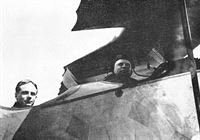 |
A.Weyl - Fokker: The Creative Years /Putnam/
|
| Ernst Udet in the pilot’s (rear) cockpit of the two-seater.
|
 |
C.Owers - Fokker Aircraft of WWI. Vol.7: Postwar /Centennial Perspective/ (67)
|
| Fokker C.I; these photographs were used in Fokker advertisements for the C.I.
|
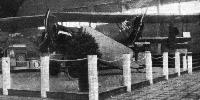 |
Журнал - Flight за 1919 г.
|
| The Fokker Stand: On the left may be seen the port wing of a parasol monoplane, while in the centre is a sporting two-seater, shown with the port wings folded for transport. In the background, on the right, is a Fokker two-seater biplane, similar to the German Fokker type D.VII.
|
 |
Журнал - Flight за 1919 г.
|
| SOME DUTCH MACHINES AT THE E.L.T.A. AERODROME: 2. A couple of Fokker biplanes, one with rotary and one with stationary engine
|
 |
C.Owers - Fokker Aircraft of WWI. Vol.7: Postwar /Centennial Perspective/ (67)
|
| Fokker operated this modified D.VII for passenger flights.
|
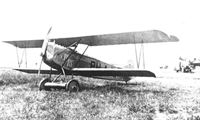 |
C.Owers - Fokker Aircraft of WWI. Vol.7: Postwar /Centennial Perspective/ (67)
|
| After the two-seat D.VII was handed back to Fokker he had it registered as PH-AJW.
|
 |
C.Owers - Fokker Aircraft of WWI. Vol.7: Postwar /Centennial Perspective/ (67)
|
| The experimental contra-rotating propellers fitted to a C.I. It apparently made a single hop, however, the arrangement caught the German's attention after the invasion of the Netherlands, and it was taken to Germany. Further details are unknown.
|
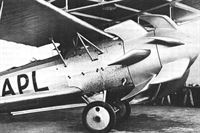 |
C.Owers - Fokker Aircraft of WWI. Vol.7: Postwar /Centennial Perspective/ (67)
|
| The experimental contra-rotating propellers fitted to a C.I. It apparently made a single hop.
|
 |
C.Owers - Fokker Aircraft of WWI. Vol.7: Postwar /Centennial Perspective/ (67)
|
| An early LVA C.I as denoted by the orange circle national insignia. Metal footsteps are placed over the wing spars at the fuselage.
|
 |
C.Owers - Fokker Aircraft of WWI. Vol.7: Postwar /Centennial Perspective/ (67)
|
| An early LVA Fokker C.I with the orange circle insignia.
|
 |
C.Owers - Fokker Aircraft of WWI. Vol.7: Postwar /Centennial Perspective/ (67)
|
| LVA Fokker C.I No. 485 with the first Netherlands national insignia. Note the bombs carried under the fuselage.
|
 |
C.Owers - Fokker Aircraft of WWI. Vol.7: Postwar /Centennial Perspective/ (67)
|
|
|
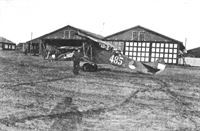 |
C.Owers - Fokker Aircraft of WWI. Vol.7: Postwar /Centennial Perspective/ (67)
|
| No. 485 with another C.I bearing the RADIO legend on its fuselage in front of the hangar.
|
 |
C.Owers - Fokker Aircraft of WWI. Vol.7: Postwar /Centennial Perspective/ (67)
|
| Fokker C.I No. 486 in late national markings with the serial repeated on the rear fuselage and informing that the machine has a 180-hp BMW installed. Note the under-surface of the wings is light blue.
|
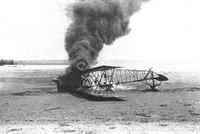 |
C.Owers - Fokker Aircraft of WWI. Vol.7: Postwar /Centennial Perspective/ (67)
|
| The end of No. 486.
|
 |
C.Owers - Fokker Aircraft of WWI. Vol.7: Postwar /Centennial Perspective/ (67)
|
| Left to right: Lts van Dorst, Sissingh and van Gemeren with No. 491. The fuel lines from the undercarriage tank and the fuselage bomb rack are well shown - probably 25-kg bombs. Note the '27' stenciled on the fuel tank.
|
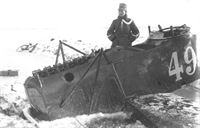 |
C.Owers - Fokker Aircraft of WWI. Vol.7: Postwar /Centennial Perspective/ (67)
|
| No. 491 after a harsh landing in snow.
|
 |
C.Owers - Fokker Aircraft of WWI. Vol.7: Postwar /Centennial Perspective/ (67)
|
| No. 491 after a harsh landing in snow.
|
 |
C.Owers - Fokker Aircraft of WWI. Vol.7: Postwar /Centennial Perspective/ (67)
|
| D.VII Nos 260 and 263 in storage with Fokker C.I No. 499 behind. It is thought that the Fokker stencil to the fuselage was applied when the two machines went to Iceland in 1932.
|
 |
C.Owers - Fokker Aircraft of WWI. Vol.7: Postwar /Centennial Perspective/ (67)
|
| View of No. 500
|
 |
C.Owers - Fokker Aircraft of WWI. Vol.7: Postwar /Centennial Perspective/ (67)
|
|
|
 |
C.Owers - Fokker Aircraft of WWI. Vol.7: Postwar /Centennial Perspective/ (67)
|
| No. 507 has RADIO stenciled on the fuselage sides.
|
 |
C.Owers - Fokker Aircraft of WWI. Vol.7: Postwar /Centennial Perspective/ (67)
|
| This snapshot of personnel at a picnic displays the Fokker C.I with the RADIO logo. The orange circle national insignia can be made out on the original.
|
 |
C.Owers - Fokker Aircraft of WWI. Vol.7: Postwar /Centennial Perspective/ (67)
|
| The observer/gunner in the rear cockpit of No. 524 show how far he can stand in the air stream. As far as is known, the C.I never had to show its mettle in combat.
|
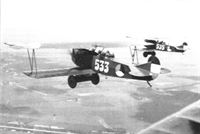 |
C.Owers - Fokker Aircraft of WWI. Vol.7: Postwar /Centennial Perspective/ (67)
|
| Fokker C.I 533 and 535 in flight.
|
 |
C.Owers - Fokker Aircraft of WWI. Vol.7: Postwar /Centennial Perspective/ (67)
|
| No. 548 in flight.
|
 |
C.Owers - Fokker Aircraft of WWI. Vol.7: Postwar /Centennial Perspective/ (67)
|
| The Five Fingers From One Hand aerobatic team in flight. The two-seat F.600 is in the lead position.
|
 |
C.Owers - Fokker Aircraft of WWI. Vol.7: Postwar /Centennial Perspective/ (67)
|
| The two-seat D.VII that was assigned the spurious serial F600 when adopted by the aerobatic team 'Five Fingers from one Hand.' It is seen here before Netherlands national insignia was applied.
|
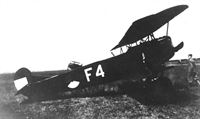 |
C.Owers - Fokker Aircraft of WWI. Vol.7: Postwar /Centennial Perspective/ (67)
|
| MLD Fokker C.I Serial No. F4 without gun ring on the rear cockpit.
|
 |
C.Owers - Fokker Aircraft of WWI. Vol.7: Postwar /Centennial Perspective/ (67)
|
| MLD serial No. F-6 in a line up of unarmed Fokker C.I biplanes.
|
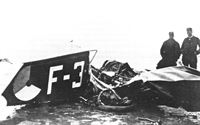 |
C.Owers - Fokker Aircraft of WWI. Vol.7: Postwar /Centennial Perspective/ (67)
|
| The remains of MLD No. F-3 that crashed on 21 September 1922, at De Kooy, killing the pilot 1st Lt J Goedhart. His observer, Off Mach2 De Jong died the following day.
|
 |
C.Owers - Fokker Aircraft of WWI. Vol.7: Postwar /Centennial Perspective/ (67)
|
| LVA No. 529 Lynx C.I. Points to note are the serial to the rear of the fuselage, the engine, the starting handle on the starboard side of the engine cowling, and the wings are green overall. In the bottom photo the engine is closely cowled.
|
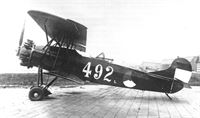 |
C.Owers - Fokker Aircraft of WWI. Vol.7: Postwar /Centennial Perspective/ (67)
|
| LVA No. 492 shows a different engine installation with metal airscrew, low pressure tyres and different shaped fin with a navigation light on top of the rudder.
|
 |
C.Owers - Fokker Aircraft of WWI. Vol.7: Postwar /Centennial Perspective/ (67)
|
|
|
 |
C.Owers - Fokker Aircraft of WWI. Vol.7: Postwar /Centennial Perspective/ (67)
|
| The end of No. 492.
|
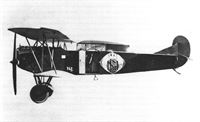 |
C.Owers - Fokker Aircraft of WWI. Vol.7: Postwar /Centennial Perspective/ (67)
|
| Fokker photographs of the C.I used in Fokker advertising material. Fokker promoted his aircraft widely and he supplied many countries as well as the Netherlands military. This Fokker C.II bears the KLM emblem.
|
 |
C.Owers - Fokker Aircraft of WWI. Vol.7: Postwar /Centennial Perspective/ (67)
|
| These photographs show the seating arrangements for the two passengers in the C.II limousine.
|
 |
C.Owers - Fokker Aircraft of WWI. Vol.7: Postwar /Centennial Perspective/ (67)
|
| The oval radiator on this version of the C.II is noteworthy.
|
 |
C.Owers - Fokker Aircraft of WWI. Vol.7: Postwar /Centennial Perspective/ (67)
|
| Fokker C.II limousine. The logo on the cabin door reads 'Fokker Express'. Probably located in the USA. Four or six C.I biplanes are reported to have gone to Canada and the USA.
|
 |
C.Owers - Fokker Aircraft of WWI. Vol.7: Postwar /Centennial Perspective/ (67)
|
| Canadian cabin Fokker C.II with registration G-CAEV.
|
 |
C.Owers - Fokker Aircraft of WWI. Vol.7: Postwar /Centennial Perspective/ (67)
|
| Lt Erlind with one of the Fokker built C.I reconnaissance biplanes. 1 October 1923.
|
 |
C.Owers - Fokker Aircraft of WWI. Vol.7: Postwar /Centennial Perspective/ (67)
|
| Oberst Koch and Lt Erlind in C.I No. 2, presumably at the beach at Klovermarken.
|
 |
C.Owers - Fokker Aircraft of WWI. Vol.7: Postwar /Centennial Perspective/ (67)
|
| Fokkers Nos. 4, 5 and 6, ready to start from Klovermarken in 1925. The serials are carried on the rudder and at the rear of the fuselage is stenciled in white - Understotning (For support) Loft her (Lift here).
|
 |
C.Owers - Fokker Aircraft of WWI. Vol.7: Postwar /Centennial Perspective/ (67)
|
| The I O prototype, No. O-56. First flown on 22 November 1926 it was in service until it had a mid-air collision with R-8 over Vaerlose, on 12 May 1936. TFT 821:30
|
 |
C.Owers - Fokker Aircraft of WWI. Vol.7: Postwar /Centennial Perspective/ (67)
|
| The final Danish derivative of the Fokker C.I, a single-seat I O, No. O-72, over the Great Belt. No. O-72, the second I O, first flew on 6 June 1933, and crashed at Farum on 13 August 1938.
|
 |
G.Swanborough, P.Bowers - United States Navy Aircraft since 1911 /Putnam/
|
| Fokker C.I at Quantico in 1922, one of the three Fokker C.Is that were delivered to the U.S. Navy after the war.
|
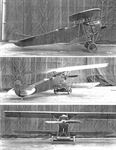 |
C.Owers - Fokker Aircraft of WWI. Vol.7: Postwar /Centennial Perspective/ (67)
|
| The Bureau No. A5887 can just be discerned on this otherwise unmarked Fokker C.I of the USMC.
|
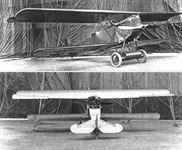 |
C.Owers - Fokker Aircraft of WWI. Vol.7: Postwar /Centennial Perspective/ (67)
|
| More views of Bureau No. A5887 can just be discerned on this otherwise unmarked Fokker C.I of the USMC.
|
 |
В.Шавров - История конструкций самолетов в СССР до 1938 г.
|
| Fokker-C.I from Naval Aviation Museum Foundation collection
|
 |
A.Weyl - Fokker: The Creative Years /Putnam/
|
| An American post-war two-seat Fok. D.VII with 200-h.p. Hall-Scott L-6 engine.
|
 |
A.Weyl - Fokker: The Creative Years /Putnam/
|
| This U.S. Army Fok. D.VII two-seater had a large cut-out in the trailing edge of the upper wing.
|
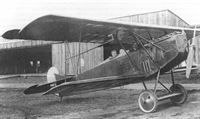 |
C.Owers - Fokker Aircraft of WWI. Vol.7: Postwar /Centennial Perspective/ (67)
|
| Two-seat D.VII with Hall-Scott painted under the lower wings. The legend on the fuselage side proclaims it has a Hall-Scott L 6 200 H.P. Power Plant installed. Note the Curtiss Jenny in the background.
|
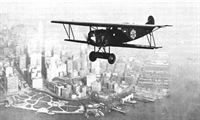 |
C.Owers - Fokker Aircraft of WWI. Vol.7: Postwar /Centennial Perspective/ (67)
|
| Fokker C.II over New York City.
|
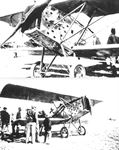 |
C.Owers - Fokker Aircraft of WWI. Vol.7: Postwar /Centennial Perspective/ (67)
|
| Two photographs of flat radiator version: This installation of a Hall-Scott motor in a two-seat D.VII has multi-louvered engine panels that change the clean lines of the D.VII.
|
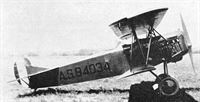 |
A.Weyl - Fokker: The Creative Years /Putnam/
|
| U.S. Army two-seat Fok. D.VII with 290-h.p. Liberty 8 engine.
|
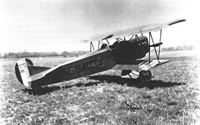 |
C.Owers - Fokker Aircraft of WWI. Vol.7: Postwar /Centennial Perspective/ (67)
|
| Two-seat Fokker D.VII serial No. A.S.94034, McCook P-290, with a V-8 motor installed.
|
 |
Форум - Breguet's Aircraft Challenge /WWW/
|
| A modified Fokker D.VII two-seater powered with a Packard engine on McCook Field. The machine lasted at least to 1922.
|
 |
H.Nowarra, G.Duval - Russian Civil and Military Aircraft 1884-1969
|
| One of a number of BMW-engined Fokker C.I aircraft purchased by the Soviet Government for reequipment of the Red Air Force.
|
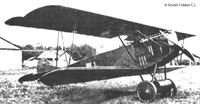 |
C.Owers - Fokker Aircraft of WWI. Vol.7: Postwar /Centennial Perspective/ (67)
|
| A Soviet Fokker C.I.
|
 |
L.Andersson - Soviet Aircraft and Aviation 1917-1941 /Putnam/
|
| One of the three two-seat Fokker C. Is acquired with the fifty Fokker D VII fighters in 1922 for use as transitional trainers.
|
 |
L.Andersson - Soviet Aircraft and Aviation 1917-1941 /Putnam/
|
| With the exception of the engine type and the configuration of the rear cockpit the Fokker C. III two-seat trainer was similar to the C I. Twelve were acquired in 1923.
|
 |
C.Owers - Fokker Aircraft of WWI. Vol.7: Postwar /Centennial Perspective/ (67)
|
| Line-up of FD.VII at Gatchina airfield in 1923. The first aircraft has been stated to be a two-seat FD.VII, however it is more probably a Fokker C.I. (via Gennady Petrov archive)
|
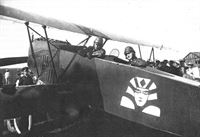 |
C.Owers - Fokker Aircraft of WWI. Vol.7: Postwar /Centennial Perspective/ (67)
|
| The Fokker C.IIIs were assigned lo the 1st Higher School of Military Pilots in Moscow. This example has an interesting motif on the fuselage.
|
 |
C.Owers - Fokker Aircraft of WWI. Vol.7: Postwar /Centennial Perspective/ (67)
|
(КПР 45а)
A Fokker C.I in Soviet service. This machine has often been misidentified as a two-seat D.VII.
|
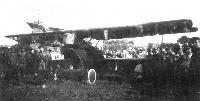 |
А.Александров, Г.Петров - Крылатые пленники России
|
| (КПР 45б)
|
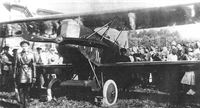 |
C.Owers - Fokker Aircraft of WWI. Vol.7: Postwar /Centennial Perspective/ (67)
|
| Crowds of civilians and Soviet officials in leather caps and jackets surround a Fokker C.I. The fuel tank between the wheels can be clearly seen.
|
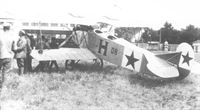 |
P.Grosz, G.Haddow, P.Shiemer - Austro-Hungarian Army Aircraft of World War One /Flying Machines/
|
| The Hungarians modified a few Fokker D.VII (MAG) fighters into unarmed two-seaters with twin fuel tanks in the top wing and four-bladed propellers. Fokker D.VII (MAG) H.08 was originally numbered 93.08.
|
 |
C.Owers - Fokker Aircraft of WWI. Vol.7: Postwar /Centennial Perspective/ (67)
|
| Two-seat D.VII H.02 with Brandenburg C.I in the background.
|
 |
C.Owers - Fokker Aircraft of WWI. Vol.7: Postwar /Centennial Perspective/ (67)
|
| A two-seat D.VII with a Brandenburg C.I.
|
 |
J.Herris - Fokker Aircraft of WWI. Vol.1: Spinne - M.10 & Watercraft /Centennial Perspective/ (51)
|
The Fokker C.IW was a postwar development. C.I work number 3972 was converted to a seaplane and first flew in September 1920. On 6 and 11 October 1920 it was tested on the Schweriner See. Its further fate is unknown. (Peter M. Grosz collection/STDB)
Fokker and de Waal in the experimental floatplane version of the Fokker C.I.
|
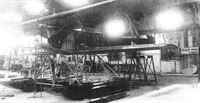 |
J.Herris - Fokker Aircraft of WWI. Vol.1: Spinne - M.10 & Watercraft /Centennial Perspective/ (51)
|
| The Fokker C.IW under construction. (Peter M. Grosz collection/STDB)
|
 |
J.Herris, J.Leckscheid - Fokker Aircraft of WWI. Vol.5: 1918 Designs Part 1: Prototypes & D.VI /Centennial Perspective/ (55)
|
| Fokker V 38
|
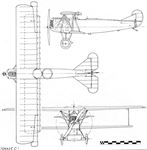 |
A.Weyl - Fokker: The Creative Years /Putnam/
|
| Fokker C.I.
|
 |
J.Herris, J.Leckscheid - Fokker Aircraft of WWI. Vol.5: 1918 Designs Part 1: Prototypes & D.VI /Centennial Perspective/ (55)
|
| Fokker V.38 / C.I
|
 |
J.Herris, J.Leckscheid - Fokker Aircraft of WWI. Vol.5: 1918 Designs Part 1: Prototypes & D.VI /Centennial Perspective/ (55)
|
| Fokker V.38 / C.I
|
 |
J.Herris, J.Leckscheid - Fokker Aircraft of WWI. Vol.5: 1918 Designs Part 1: Prototypes & D.VI /Centennial Perspective/ (55)
|
| Fokker V.38 / C.I
|
































































































